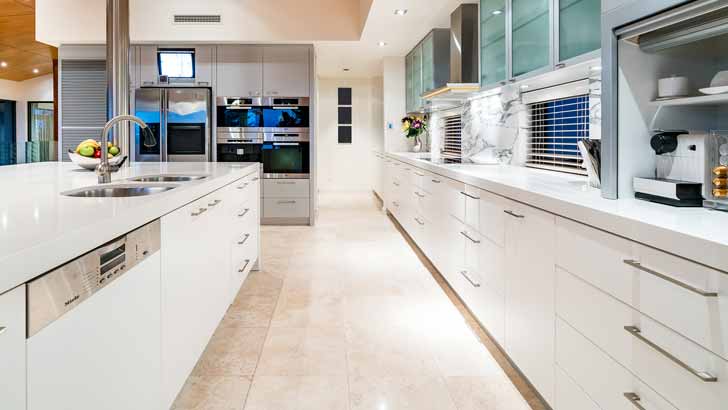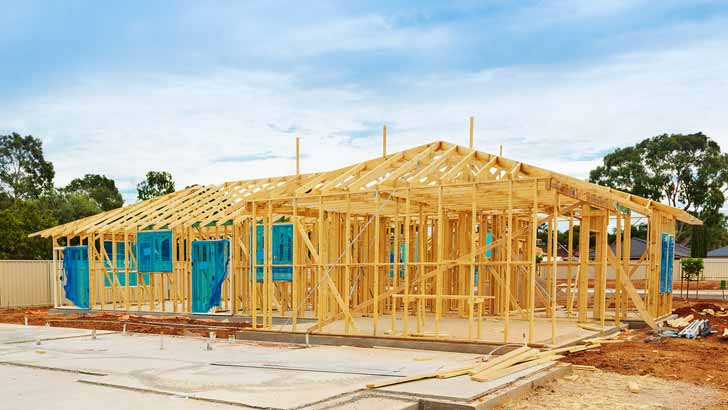The perks and pitfalls of buying a house and land package
By Nicola Field
What better way to get what you want in a home than to build it yourself? And it turns out plenty of Australians are doing just that, with new-home builders representing 35% of all those who have purchased a home in the past two years.
But when it comes to constructing a new home there's plenty of room for error, and it pays to know the traps to avoid to prevent your dream home being a source of sleepless nights.
Chelsey Quartermain is general manager of Houseandland (house andland.com.au), a website that allows home buyers to find their block of land, then match the house design that best suits the block from a range of builders.
According to Quartermain, there can be compelling reasons to build a home from scratch, and research by Houseandland shows 72% of home buyers are attracted by the chance to personalise their design.
Buying in a new subdivision, often with a house-and-land package, can also be very affordable.
"Buyers can often pay well below the city-wide median price by opting to build in one of these developing areas," says Quartermain.
As a guide, she says a house-and-land package in Melbourne's outer suburbs typically costs around $360,000-$400,000, which is significantly below Melbourne's median dwelling value of $720,000.
House-and-land packages - where you select your block then build the home of your choice - can provide savings on stamp duty too. That's because duty is only paid on the value of the vacant land, and not on the value of the home that will come later.
In addition, first home buyers can tap into a range of state government incentives pitched at building or buying a new home. As our panel (at right) shows, a NSW first home buyer opting for a new build may be entitled to a first home owner grant of $10,000 with zero stamp duty payable on land valued at up to $350,000. That's a potential saving on duty of $11,240 on the land alone.
Nonetheless, Quartermain cautions that there is always a risk of being "blindsided by affordability".
Display home vs. reality

A key pitfall of house-and-land packages is that the home you sign up for may not be identical to the display home.
"When you look at the display home, you're seeing the ultimate product," she says.
The finished product you're buying may not have the same quality of tiles, flooring or appliances.
Even landscaping basics such as a driveway, fencing, mailbox and a clothes line can be considered "extras" that come at additional cost. And while building a new home offers opportunities to customise the interior layout, Quartermain says even minor alterations to a builder's base design can blow out the cost.
"Underestimating costs is probably the most common mistake that new home buyers make when building their first home," says Quartermain. She adds that builders may intentionally offer a price estimate significantly lower than the final cost of your home in an effort to win your business.
Buyers can protect themselves from this tactic by asking the builder for a detailed breakdown of the costs and home features involved. Importantly, Quartermain recommends asking the builder about procedures for dealing with any cost increases.
"A reputable builder should notify you in writing of any possible changes for your approval before proceeding," she says. "The better you understand the details of the estimate and the ways it may change during the building process, the better you will be able to budget for any extraneous costs."
The design and cost of your new home aren't the only things to examine carefully. Houseandland research shows that having a backyard is the most appealing feature for 48% of first home buyers. But lot sizes are shrinking in new estates.
According to the Urban Development Institute of Australia, the average new block is 422 square metres - 16% smaller than in 2014.
For the record, that's a 10th of an acre - a far cry from the quarter-acre block (1100sq m) of previous generations. The upshot is that homes in new developments can be positioned close together.
"Consider the outlook of your home," says Quartermain. "You may be facing onto a vacant lot today but it won't always be unoccupied."
Financing the build

Part of building a new home is mapping out how you'll finance the project. Darren Sambrooks, director of Perth-based mortgage broker Ocean Edge Finance, says a new construction can involve more risks than purchasing an established property.
He says buyers typically need a deposit of at least 10% of both the cost of the land and the construction cost of the home.
"We are seeing a small number of lenders who still lend up to 95% but the rates on these loans are higher," he warns. "And with such low equity it can be difficult to refinance to a cheaper loan at a later stage." That said, he notes that first home buyers often use a guarantor to meet deposit requirements.
When it comes to finance options, buyers can use a traditional mortgage to purchase a newly constructed home. If you plan to buy land and build later, the most common strategy is to take out one loan for the land (to pay the developer) and a separate construction loan for the home (to pay the builder).
Construction loans work differently from normal home loans, with the funds being paid out piecemeal in line with various stages of construction. Interest is charged only on the funds drawdown so it can be a cost-effective way to finance a building project.
Sambrooks recommends applying for pre-approval on the construction loan at the same time you're sorting out the land loan.
"This lets buyers have their total finance requirements approved from the beginning, and provides a clear idea of how much you can afford to spend on your home design," he says.
Construction delays
The weak spot of this approach is that pre-approval on the construction loan generally only lasts for three months.
"If construction hasn't commenced within this time frame, pre-approval can expire and the loan will need to be re-applied for," says Sambrooks. However, there are other reasons to get cracking with the building process.
Lengthy delays can bring added risks - anything from a change in lending policies to a softening of the property market. The latter could result in a lower property valuation, meaning you may be approved for a smaller construction loan than originally anticipated.
When you're building a new home, lenders will want to see a lot more information than if you buy an established property.
At a minimum you'll be asked to provide a fixed-price contract from the builder, building plans and a completion schedule. "The bank's valuer will use these details to work out an 'as if complete' valuation of the property, and from there decide how much they'll lend," says Sambrooks.
This "as if complete" valuation can be problematic. Before handing over the final progress payment on the construction loan, a lender will want to have your newly built home formally valued. The trouble is that in new estates there may be few - if any - sales of similar completed homes that the bank's valuer can use as a benchmark.
Sambrooks says this can see the valuer err on the conservative side and provide a valuation below what was initially expected.
"That may not be a problem if you're only borrowing 60% of the construction costs," says Sambrooks.
"But if you're borrowing closer to 80% it can suddenly mean being asked to pay lenders mortgage insurance. Or if you are at the lender's upper borrowing limit of 90% or 95%, it can leave home buyers scrambling for cash to make up the shortfall." This highlights the importance of allowing for extra costs in a home-building budget.
A final note of caution. Some builders offer zero deposit finance. Sambrooks says home buyers should be extremely wary of these deals.
"They usually come with a very high interest rate, and without any equity at all in your home it's going to be hard to refinance to a more affordable rate in the near future."
Get stories like this in our newsletters.



